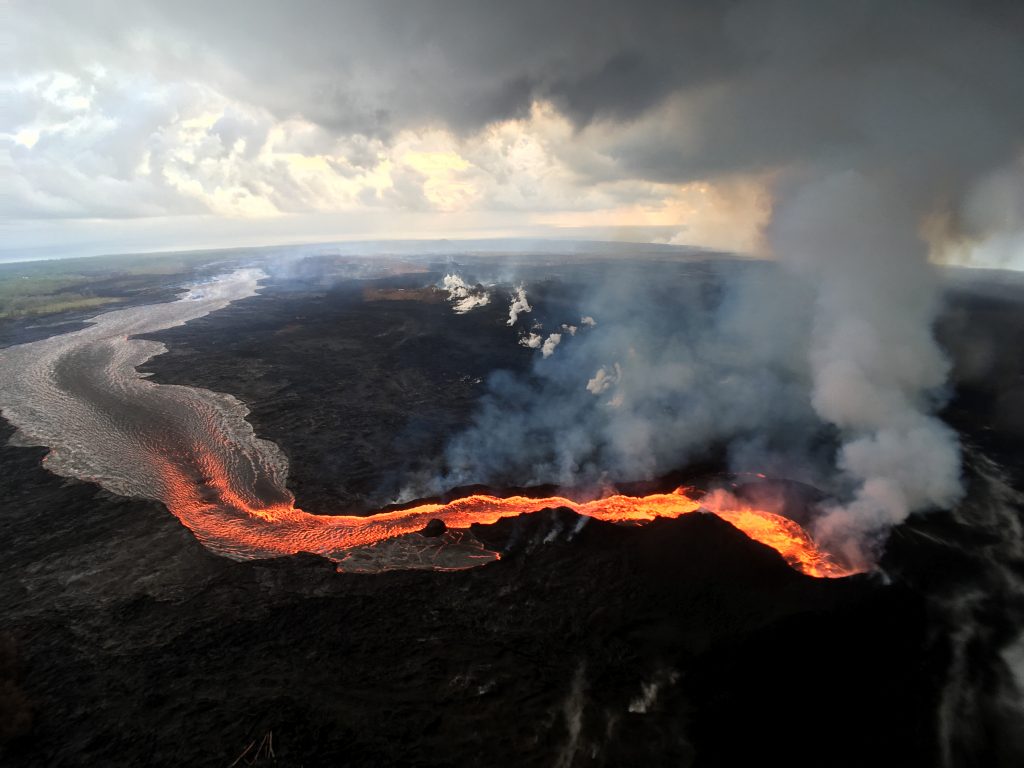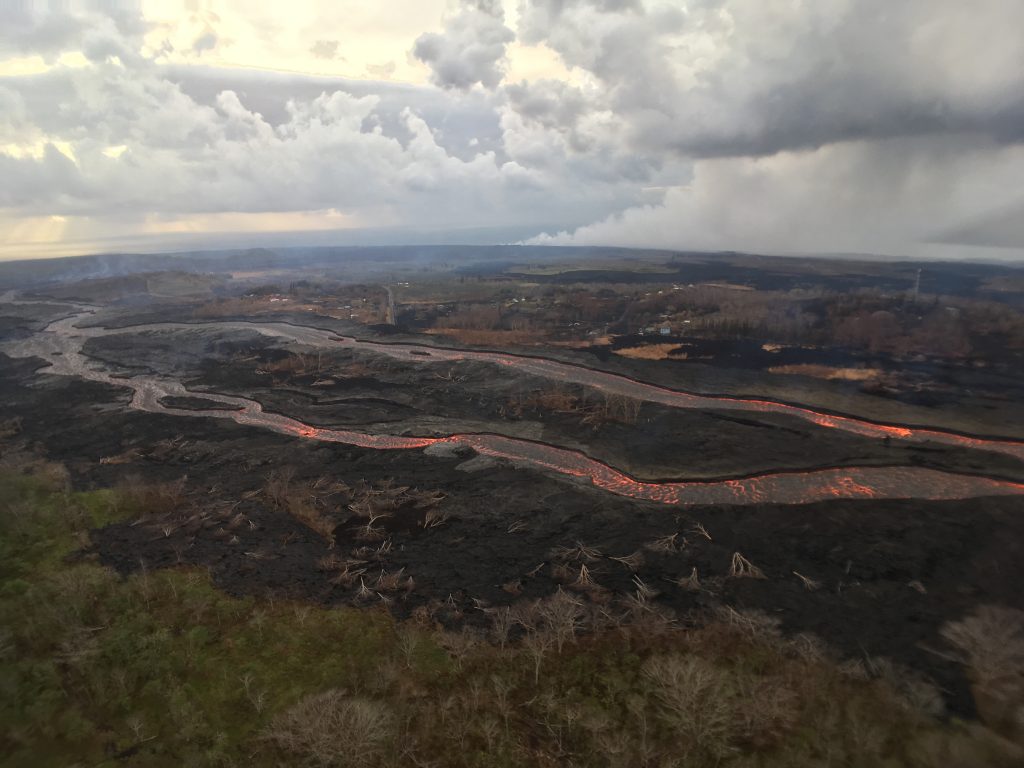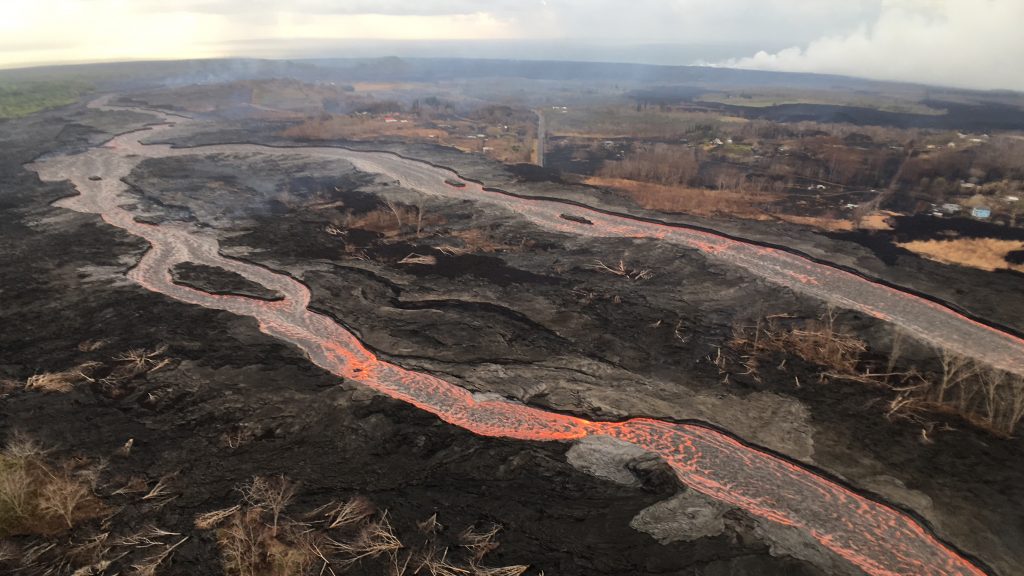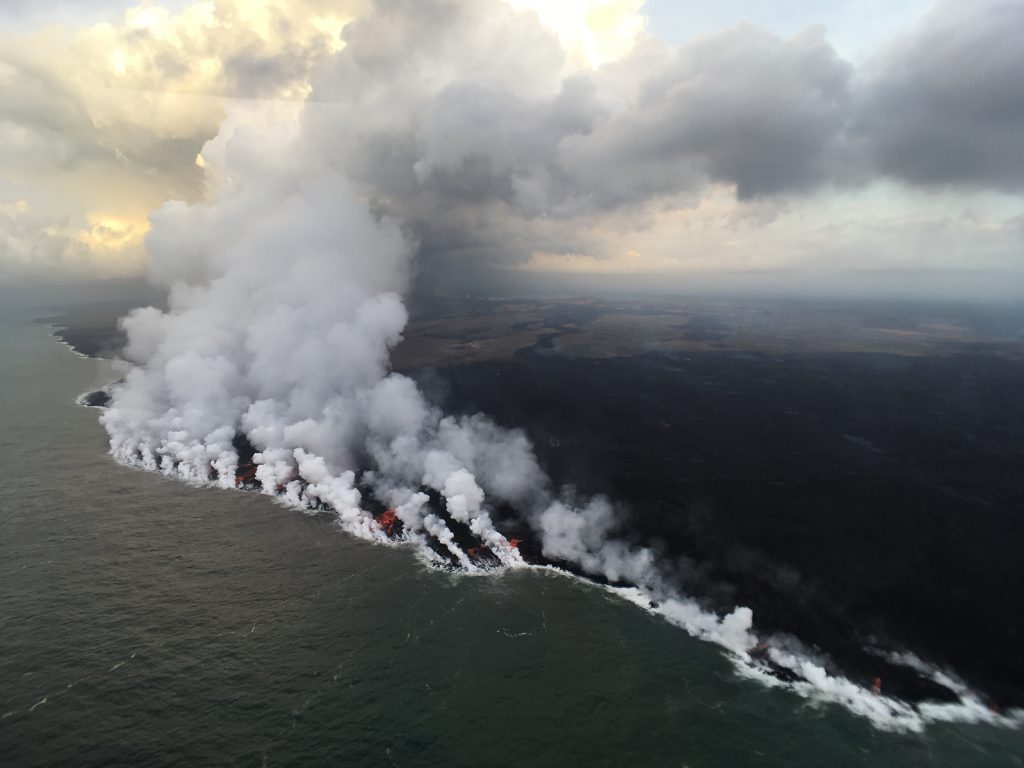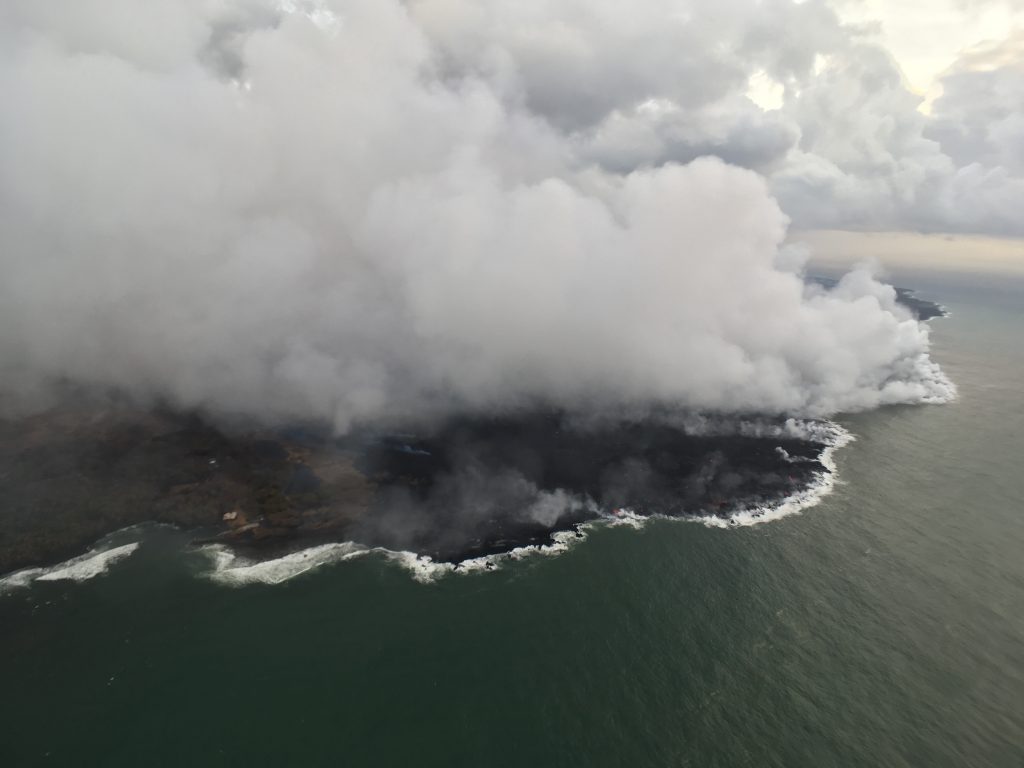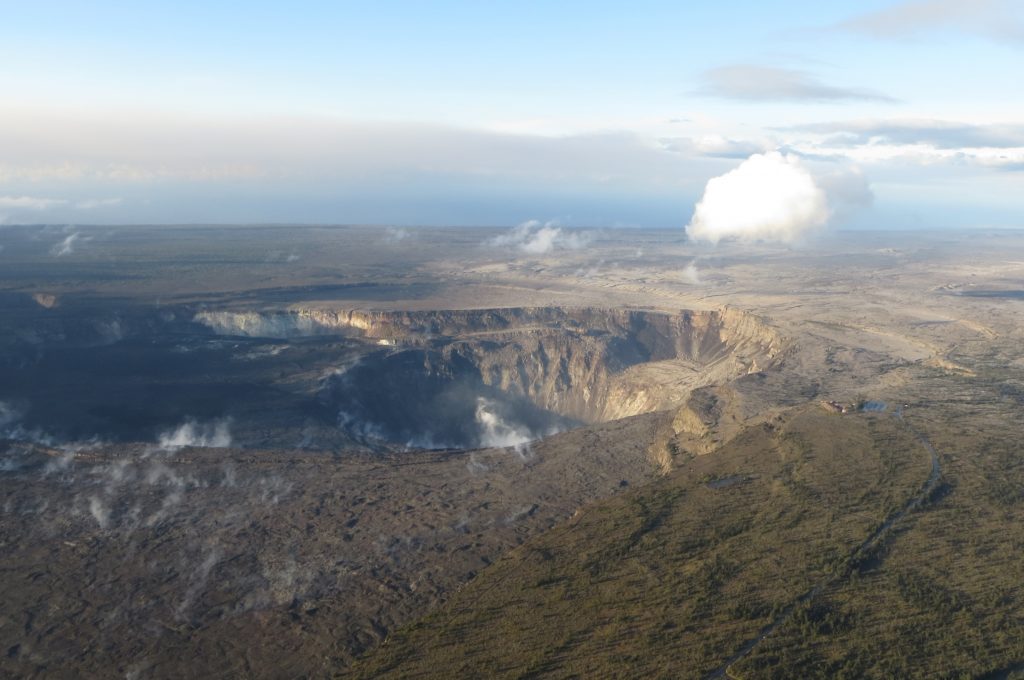PHOTOS: Perched Channel, Ocean Entry
The U.S. Geological Survey released these photos of the East Rift Zone on Sunday, July 29, 2018.
Kīlauea lower East Rift Zone
Fissure 8 continues to erupt, feeding lava to a perched channel that extends to the coast.
The white laze plume at the distant ocean entry is visible just to the left of the gases rising from the Fissure 8 cone (lower right).
An aerial view of the braided section of the Fissure 8 lava channel captured during HVO’s overflight of Kīlauea’s lower East Rift Zone eruption this morning.
A slightly closer view of the braided section of the Fissure 8 lava channel before it turns southward and heads toward the ocean.
The ocean entry laze plume is visible at upper right.
The main ocean entry remains in the Ahalanui area, where numerous small streams of lava were entering the ocean across a broad swath of coastline this morning.
The western flow margin did not advance overnight, and remained approximately 0.1 mile from the Pohoiki Boat Ramp at Isaac Hale Park this morning.
Kīlauea summit
This aerial view of Kīlauea’s summit (taken early yesterday morning, looking south) shows some well-known features and some that are now more obvious as a result of ongoing collapse of Halema‘uma‘u and parts of the summit caldera floor.
Crater Rim Drive (lower right) leads to the USGS Hawaiian Volcano Observatory and NPS Jaggar Museum (right, middle), perched on the caldera rim and overlooking the growing Halema‘uma‘u. Ground cracks, parallel to the crater rim, are visible on the north side of Halema‘uma‘u (left side of image). South Sulphur Bank stands out as the light-colored area on the opposite crater wall.



